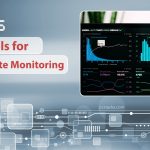In the complex realm of enterprise cybersecurity, one area often surrounded by confusion is the monitoring of “vault” solutions. These digital vaults—used to securely store secrets, encryption keys, credentials, and other sensitive data—are essential components of an organization’s security infrastructure. However, as enterprises adopt various vendor products and open-source implementations such as HashiCorp Vault, CyberArk, or Azure Key Vault, the monitoring aspect becomes fragmented and often misunderstood.
The term “vault monitoring” encompasses a wide range of functionalities, from basic metric tracking and audit logging to fully integrated security oversight. While the core intent is always secure and reliable key management, misinterpretations about what’s being monitored and how often lead to potential gaps in visibility, compliance issues, and extended troubleshooting times.
Table of Contents
What is Enterprise Vault Monitoring?
Enterprise vault monitoring refers to the continuous observation of digital vault activities, health, access patterns, and configurations within a secured IT environment. Vaults are commonly deployed to manage:
- API tokens
- Database credentials
- SSH keys
- Encryption keys for data-at-rest or data-in-transit
Monitoring ensures that secrets are appropriately issued and rotated, unauthorized access attempts are detected, and healthy system behavior is maintained.

Common Sources of Confusion
Organizations often struggle to establish a consistent monitoring model due to the following contributing factors:
1. Mixing Up Vault Telemetry with Access Logs
Many teams interpret access logs as adequate monitoring. While audit logs capture individual access attempts, telemetry metrics provide insight into the actual system performance. Both components are required for comprehensive oversight—but they serve different purposes.
- Audit Logs: Who accessed what and when.
- Telemetry/Metrics: CPU usage, request rates, error rates, and subsystem health.
Failing to differentiate these can cause a blind spot in either security posture or performance monitoring.
2. Third-Party Integration Limitations
Some vendors allow plug-ins or platform integrations (e.g., Splunk, Prometheus, or Grafana) for monitoring events or logs. However, these integrations vary extensively in what data they expose. Teams may assume they are monitoring ‘everything’ when only a subset of events or limited metrics are actually tracked.
Furthermore, APIs may restrict visibility without specific role-based access with extended permissions—leading to incomplete monitoring coverage unless configured carefully.
3. Misunderstanding What “Healthy Vault” Means
Just because a vault is “alive” doesn’t mean it’s functioning optimally. For instance,:
- The vault service may be running, but secrets may not be renewing correctly.
- An auto-unseal configuration may be broken, leaving the vault unrecoverable upon reboot.
- There may be delays in replicating sensitive data across clusters.
A healthy status must go beyond availability and include checks on critical components like token TTLs, certificate expirations, and storage backend connectivity.
4. Nonstandard Alerting Thresholds
The lack of standardized alert policies across tools and platforms leads to inconsistent action on the same type of event. One team’s setup may trigger high CPU usage at 80%, while another waits until it hits 95%, losing valuable reaction time. Similarly, what constitutes a “suspicious access” can vary widely and generate either alert fatigue or underreporting of risk.
Building a Comprehensive Vault Monitoring Strategy
To clarify and streamline enterprise vault monitoring, organizations need to establish a strategy that balances system health, access security, and operational readiness. Here’s how:
1. Categorize Monitoring Data Streams
Recognize the three major dimensions of vault monitoring:
- System Health Metrics: Track resource consumption, response times, and uptime.
- Security Events: Watch for unauthorized access, IP anomalies, and user behavior patterns.
- Configuration Drift: Monitor changes in policies, access permissions, or replication settings.
This classification helps teams evaluate where they’re covered and where the gaps are.
2. Centralize Monitoring Tools
Use a centralized dashboard to draw insights from your various vaults—whether hosted in the cloud, on-premise, or hybrid environments. Platforms like Datadog, Prometheus with Grafana, or native offerings from each vault provider can integrate into enterprise observability stacks.
Combining logs, metrics, and alerts into a single pane of glass streamlines triage and forensic analysis.
3. Define and Test Alerts for Every Tier
Establish alert conditions at every operational tier:
- Infrastructure Level: CPU, memory, disk usage
- Vault Layer: Request duration, renewal error count, failed logins
- Security Triggers: Access from unusual IPs, access after hours, frequently failing tokens
Don’t forget to routinely test these alerts—outdated alerts serve no purpose.
4. Staff Cross-disciplinary Ownership
Teams often silo vault configuration to infrastructure units but remain dependent on security or compliance teams for alerts. Bridging this gap with cross-functional ownership ensures that monitoring is both technically accurate and policy-complete.
Best Practices to Avoid Monitoring Pitfalls
- Enable Full Audit Logging: Always configure full logging and retain logs in a centralized and secure environment for forensic needs.
- Use Namespaces Wisely: Avoid putting all secrets into a single namespace—monitoring and alerting is clearer and more scalable with defined scopes.
- Don’t Rely Solely on Vault Uptime: Uptime is good, but not sufficient. Track the full lifecycle of secret generation, revocation, and usage.
- Rotate and Monitor Tokens: Ensure that token creation, use, and expiration are logged and that anomalies are flagged properly across tenants.
Conclusion
Vault monitoring may seem like a technical afterthought, but in today’s enterprise, it’s a cornerstone of operational security. A misunderstood monitoring strategy can mean slow breach detection, failed compliance audits, and system downtime. By clarifying what is being monitored, how the data is collected, and who is responsible, organizations can better protect their most sensitive digital assets—and do so with confidence.
Frequently Asked Questions (FAQ)
What types of vaults are used in enterprises?
Enterprises use a variety of vault solutions, including open-source platforms like HashiCorp Vault, cloud-native solutions such as AWS Secrets Manager or Azure Key Vault, and commercial offerings like CyberArk and Thycotic.
Is monitoring audit logs the same as full monitoring?
No, audit logs cover access events, while full monitoring includes performance metrics, configuration validation, anomaly detection, and system health indicators.
What is the difference between vault performance metrics and security alerts?
Performance metrics track how well the vault is running (e.g. latency, availability), whereas security alerts focus on unauthorized actions or policy breaches.
How often should vault metrics and logs be reviewed?
Metrics should be monitored continuously through automated systems. Logs should be reviewed daily or weekly depending on criticality and compliance needs.
Can a vault be “up” but unusable?
Yes, scenarios like failed auto-unseal, broken authentication backends, or expired root tokens can render a vault unusable even if it’s technically online.
How do you know your vault monitoring setup is effective?
Effectiveness is demonstrated by your ability to detect and respond to issues promptly. Test alerts regularly, simulate failures, and verify that both system health and access events are visible and actionable.




